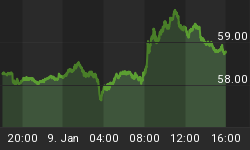Enhance your trading confidence with a 2-minute lesson on how to combine Moving Average Convergence Divergence with other technical tools.
"Guessing or going by gut instinct won't work over the long run. If you don't have a defined trading methodology, then you don't have a way to know what constitutes a buy or sell signal. Moreover, you can't even consistently correctly identify the trend."
-Jeffrey Kennedy
Jeffrey Kennedy is an accomplished teacher and a Senior Analyst here at EWI. Yet he often says that the Wave Principle alone is not a trading methodology. It does not tell you how much trading capital you can afford to risk, or specific guidance about which entry or exit levels are best suited for your trading style or where to set your protective stop.
Kennedy also says that along with risk management and emotional discipline, the right technical tools are a vitally important part of supporting your wave count.
To enhance trading confidence, Jeffrey's 3 favorite technical tools are Japanese candlesticks, RSI, and MACD. (read Part 1 on Japanese Candlesticks and Part 2 on RSI ). Today's lesson shows you how MACD can help identify trading opportunities with an example from USDCAD.
This 2-minute video and overview of MACD are adapted from Jeffrey's Elliott Wave Junctures educational service (which empowers subscribers with information on nearly every aspect of trading. Try it risk-free for 30-days >> ).
Moving average convergence divergence (MACD) is a momentum indicator developed by Gerald Appel. It consists of two exponential moving averages, the MACD line and Signal line. The difference between these two lines yields an additional indicator, MACD Histogram.
Since these studies evaluate momentum, they work optimally in trending markets. When combined with reversal candlestick patterns, MACD and MACD Histogram can increase confidence in these patterns as well as continuation of the larger trend.
MACD divergence occurs when prices move one way and MACD moves the other. Bearish divergence forms when prices make new highs and MACD does not. Conversely, new price lows without lower MACD readings is bullish divergence. These conditions aid traders in identifying potential changes in momentum and trend.
MACD is constructed using two lines referred to as the MACD line and the Signal line.
When the MACD line appears to penetrate the Signal line, but fails to do so, a hook forms. The significance of a hook is that it coincides with countertrend price moves.
MACD is excellent technical tool provided you know how to use it and what to look for.

Learn the Best Technical Indicators for Successful Trading
This free report from Elliott Wave International will teach you how to incorporate technical indicators into your analysis to improve your trading decisions.
You'll learn which technical indicators are best for analyzing chart patterns, which are best for anticipating price action, and which are best for spotting high-confidence trade setups. You'll also learn how technical indicators can be used to complement Elliott wave and other technical methods.
Get your technical indicators report now >>
This article was syndicated by Elliott Wave International and was originally published under the headline (Video) Top 3 Technical Tools Part 3: MACD. EWI is the world's largest market forecasting firm. Its staff of full-time analysts led by Chartered Market Technician Robert Prechter provides 24-hour-a-day market analysis to institutional and private investors around the world.















